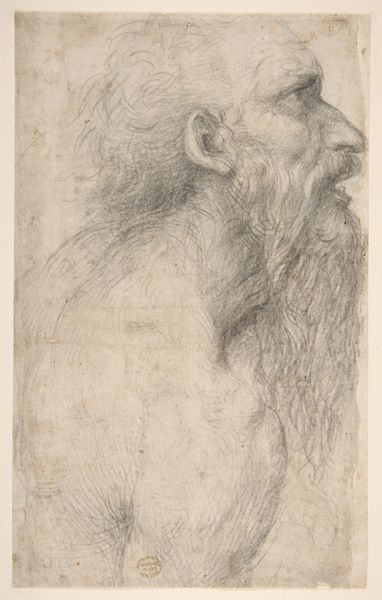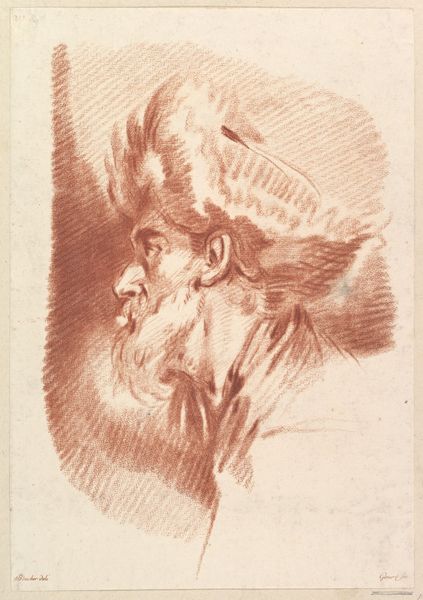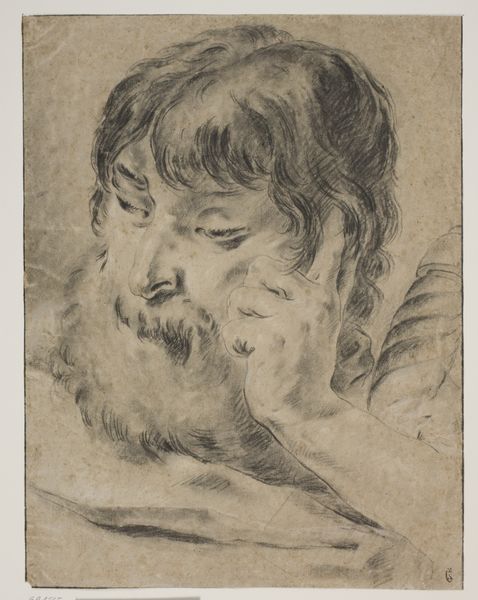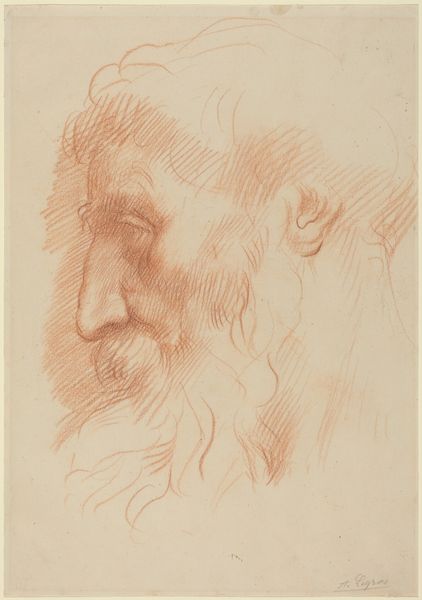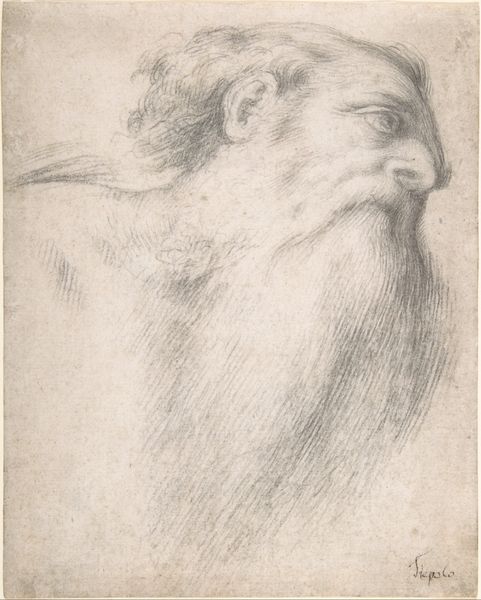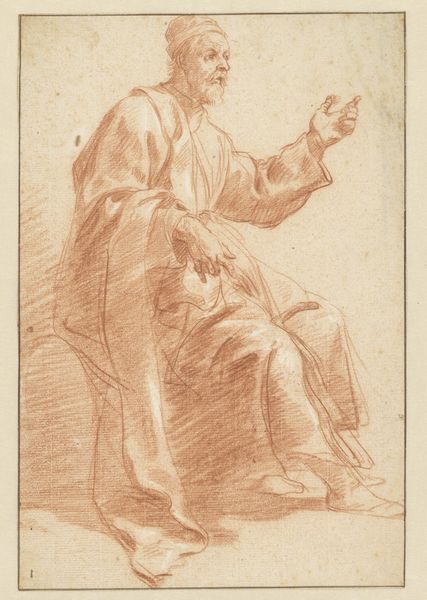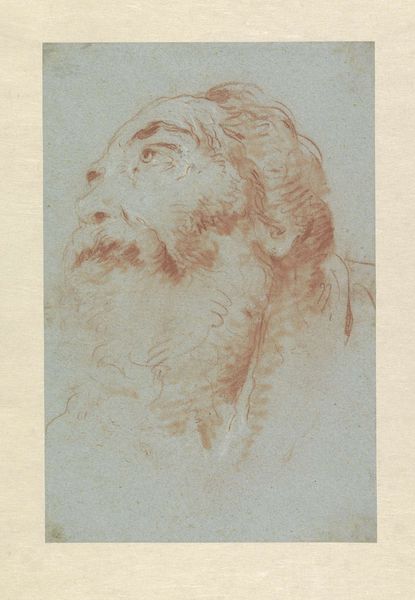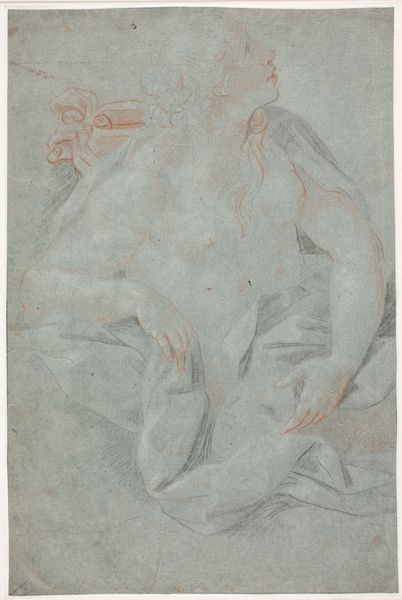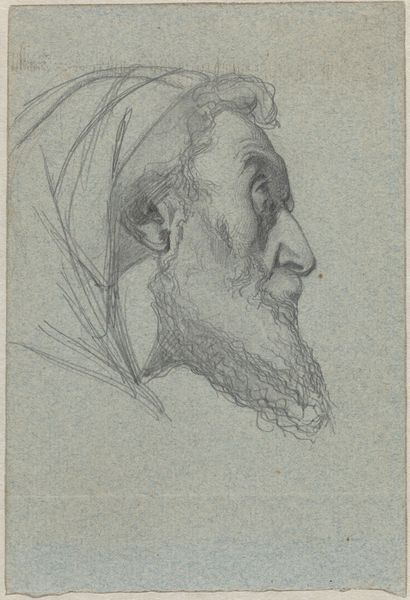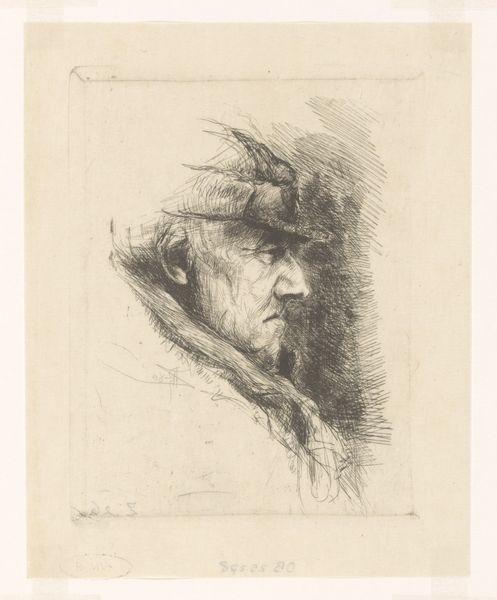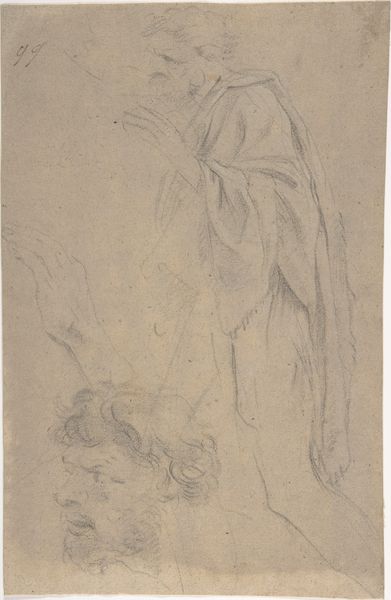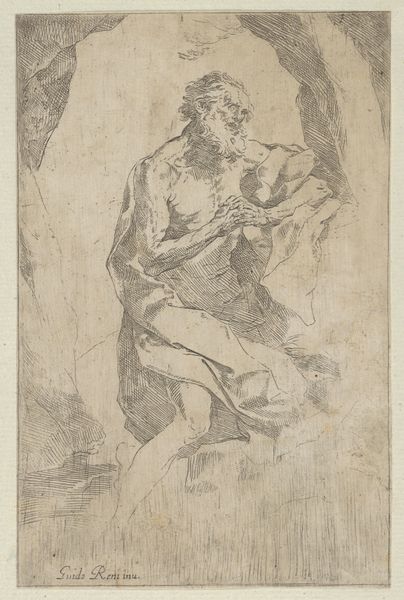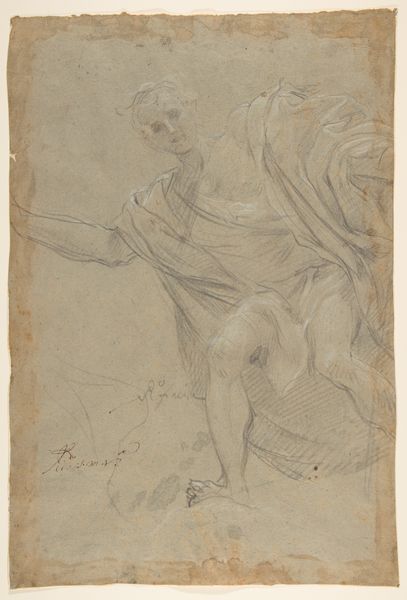
drawing, chalk, charcoal
#
portrait
#
drawing
#
self-portrait
#
baroque
#
charcoal drawing
#
chalk
#
charcoal
Copyright: Public Domain
Curator: Here we have Giovanni Battista Piazzetta's "Head of a Bishop in Profile," a drawing created around 1740, currently residing at the Städel Museum. What's your initial reaction to this piece? Editor: Austere, almost severe. The muted charcoal palette contributes to a sense of solemnity. I immediately key into the clasped hands, giving a sense of devout contemplation. Curator: Piazzetta was quite the figure in the 18th century Venetian art scene, influencing many with his unique approach to draftsmanship. He utilized charcoal and white chalk to create dramatic chiaroscuro effects. This portrait showcases his remarkable skill. Editor: The bishop’s profile is so iconic—the miter, the flowing beard. It pulls from centuries of Christian iconography, suggesting wisdom and authority. The hands too, that specific gesture—do they signify prayer, or perhaps concern? Curator: Considering the social role of the church in 18th-century Venice, these depictions also reinforced a specific social hierarchy. Piazzetta worked at a time when the church wielded significant cultural and political power. Editor: It is a study in contrasts; light and shadow, earthly power and spiritual devotion. Piazzetta seems less interested in a realistic likeness, and more with an evocative representation that taps into pre-existing cultural understandings of faith and leadership. Curator: It’s true, though these portraits offered him economic security, contributing to a career bolstered by church commissions. The church was a major patron, offering many artists financial stability. Editor: In viewing the artwork with all this information in mind, it reinforces the bishop as a pillar of Venetian society, blending sacred and secular authority within the visual culture of the time. Curator: Absolutely, understanding Piazzetta’s work within its socio-political context unveils just how much these images served to reinforce existing structures of power. Editor: Precisely. The piece continues to intrigue with its symbolism, even as historical context further enriches its many layers.
Comments
stadelmuseum about 2 years ago
⋮
The drawing on view here was once in the collection of Johann Friedrich Städel, who was familiar with Piazzetta’s drawings through the widely circulated engraved reproductions by Marco Pitteri and Giovanni Cattini. Yet Städel may also have been inspired to purchase this work by his familiarity with the altarpiece Piazzetta executed in 1735 for the Church of the German Order in Sachsenhausen. He could well have seen the latter work in its original setting before it was carried off to Paris in 1796 as war booty.
Join the conversation
Join millions of artists and users on Artera today and experience the ultimate creative platform.
